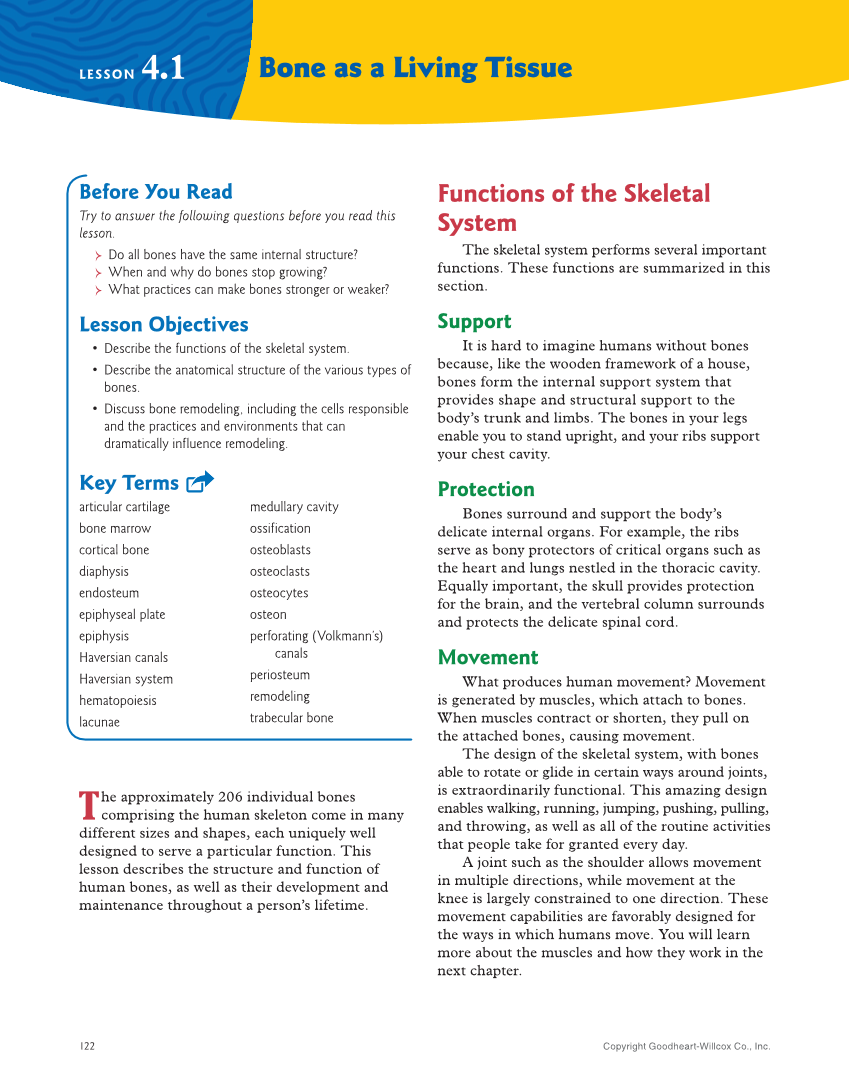122 LESSON 4.1 Bone as a Living Tissue Functions of the Skeletal System The skeletal system performs several important functions. These functions are summarized in this section. Support It is hard to imagine humans without bones because, like the wooden framework of a house, bones form the internal support system that provides shape and structural support to the body’s trunk and limbs. The bones in your legs enable you to stand upright, and your ribs support your chest cavity. Protection Bones surround and support the body’s delicate internal organs. For example, the ribs serve as bony protectors of critical organs such as the heart and lungs nestled in the thoracic cavity. Equally important, the skull provides protection for the brain, and the vertebral column surrounds and protects the delicate spinal cord. Movement What produces human movement? Movement is generated by muscles, which attach to bones. When muscles contract or shorten, they pull on the attached bones, causing movement. The design of the skeletal system, with bones able to rotate or glide in certain ways around joints, is extraordinarily functional. This amazing design enables walking, running, jumping, pushing, pulling, and throwing, as well as all of the routine activities that people take for granted every day. A joint such as the shoulder allows movement in multiple directions, while movement at the knee is largely constrained to one direction. These movement capabilities are favorably designed for the ways in which humans move. You will learn more about the muscles and how they work in the next chapter. Before You Read Try to answer the following questions before you read this lesson. Do all bones have the same internal structure? When and why do bones stop growing? What practices can make bones stronger or weaker? Lesson Objectives • Describe the functions of the skeletal system. • Describe the anatomical structure of the various types of bones. • Discuss bone remodeling, including the cells responsible and the practices and environments that can dramatically influence remodeling. Key Terms articular cartilage bone marrow cortical bone diaphysis endosteum epiphyseal plate epiphysis Haversian canals Haversian system hematopoiesis lacunae medullary cavity ossification osteoblasts osteoclasts osteocytes osteon perforating (Volkmann’s) canals periosteum remodeling trabecular bone The approximately 206 individual bones comprising the human skeleton come in many different sizes and shapes, each uniquely well designed to serve a particular function. This lesson describes the structure and function of human bones, as well as their development and maintenance throughout a person’s lifetime. Copyright Goodheart-Willcox Co., Inc.
